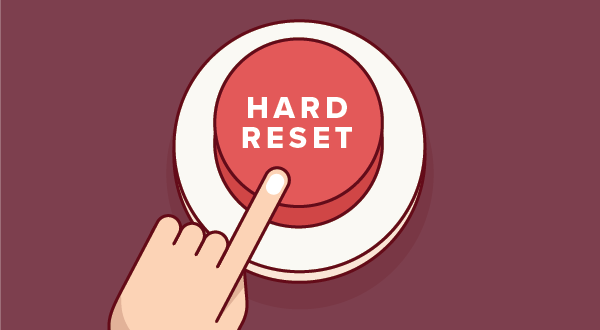The Startups Team

Welcome to Phase Two of a four-part Splitting Equity Series. If you missed it, start your journey here: Introduction - Early Startup Equity — Getting it Right before continuing on if you haven’t already, and go in order from there.
Phase One - Startup Equity - Avoiding Early Mistakes
Phase Two - Part 1 - How Startup Equity Works
Part 2 - Startup Stock Options
Part 3 - Startup Stock Vesting ( ←YOU ARE HERE 😀)
Part 4 - Startup Stock Valuation
Phase Three - How to Split Equity
Phase Four - Equity Management
Let's continue!
Vesting is a way to allow members to "earn" their stock over some period of time or per specific milestones. A common "4-year vesting schedule" means that a member of the company will earn 25% of their stock or stock options per year over a total of 4 years (the vesting period).
A typical vesting schedule means an employee won't get their full stock until they are "fully vested" at the end of 4 years (or whatever their own vesting schedule is set at). This creates some incentive for employee ownership to be aligned with a longer-term contribution.

Stock Vesting for Not Dummies
Think of it like this — if I'm your co-founder, there are only two ways we can divide our full ownership. First, we can divide it all upfront and be done with it. That's how most startups do it because it's simple, but that doesn't mean it's a good idea.
That said, everyone in the 1970s let their little kids ride in the front seat of the station wagon with no seat belt, but that didn't make it a good idea!
Or, because we took the time to seek out a course on how to split equity properly, we can learn why smart co-founders (and the investors who back them) prefer to set up a vesting schedule to earn their stock over time!
You're the Vest... Around (meh mah meh meh meh mah meh mah meh)
(If you read that and knew it was a Karate Kid reference, you’re cool in my book).
Vesting schedules are commonly used among funded startups as employer contributions to employees who earn their stock (or stock options) over time. As opposed to immediate vesting where all the stock is granted up front, this provides an incentive to stick around.
It also provides a mechanism to be sure that if folks bail (or get fired) that a huge swath of equity wasn't arbitrarily awarded without earning it.
Founders Vesting their own Equity?
So why would the two of us wily co-founders want to vest our own equity?
Simple — to make sure we both do what we think we're going to do over the long haul. Without vesting, we run into the problem of having distributed equity without being sure our own contributions have been truly earned. That goes for Founders as well as employees.
If everyone is doing what they said they were going to do - vesting shouldn't be a problem and it should go unnoticed. However, if problems arise (a founder leaves, for example) then vesting becomes really important because we haven't given away all of the stock without a mechanism to return it fairly.

3 Vesting Schedule Decisions
Assuming we understand the value of vesting, we have 3 big decisions to make to determine how vesting will work. We've got some smaller details like "exercise price" that are also important but for now, let's focus on the "Big 3."
Vesting Schedule
The time period that determines how long our equity will take to be earned. Most startups define vesting schedules to be 3 or 4 years.
Vesting Cliff
A determined period of time (typically the first year, so a "one-year cliff") where equity cannot be granted. This allows us to make sure someone puts in at least a year before we start awarding stock, or we push them off a cliff — metaphorically speaking of course! Typically if an employee leaves within the first year they will not be awarded stock.
Vesting Acceleration
Events that would cause the unvested shares to automatically vest based on a specific milestone (often an acquisition of the company). These vesting terms are often overlooked but incredibly important down the road.
Those 3 decisions will be most of our vesting work and will set the framework for who the company shares are doled out over time. We want an employee compensation package that's fair, but we also want a potential solution that doesn't put our startup in a bad spot.

Vesting Schedule
Vesting works on what's called a "vesting schedule" which simply means the amount of time until all of our stock is earned. These are usually represented in a single-year period (1, 2, 3, 4 years).
In the example we used earlier, if we have a "four-year vesting period" of our equity, that means at the end of year 1 we will own 25% of our total 100% stake. At the end of Year 2, we will own a total of 50%, and so on. We have to stick it out for 4 years to earn 100% of our stake using a time-based schedule.
The two most common types of vesting schedules are "time-based" and "milestone-based."
Time-Based
Equity is earned over a fixed period of time (typical is a three or four-year vesting schedule) with a specific percentage vested at each date. This is the route most startups go.
The decision is largely based on how long we think someone should contribute in order to earn their full stock. The three or four-year vesting schedule plans are where most startups land because it implies someone has made a significant contribution.
Key Decision:
Pick a time period in which vesting will fully occur. 4 years is standard, but we can choose any period of time.
Milestone Based Vesting
In Milestone Based Vesting equity or stock options are earned based on the member achieving certain milestones. For a salesperson, for example, the milestone could be a certain sales target. For a software engineer, it could be a specific release date of the company's product.
There are no hard and fast rules on how long a vest should occur or what milestones we can choose. Just like negotiating compensation, we want to find a balance between being fair and “well-earned.” If we think that 2 years is enough time for the Founders to have earned our stock, so be it.
Key Decision:
Pick certain milestones that we think are critical to the growth of the business and apply a market based value to that contribution that can be translated into full vested stock.
Vesting Cliff
Cliff vesting is a form of time-based vesting where employees receive shares only if they have stayed on board for a certain period of time (typically one year).
Imagine what would happen if startup founders were awarding vested shares to every new employee regardless of whether or not they only worked a few months. Our cap table would be loaded with owners who were never really around long enough to contribute.

A "Vesting Cliff" Awards Contributors
To combat this, we can set up a “vesting cliff” that stipulates a minimum time period someone has to be vested before any of their stock can be granted. This is often a one-year cliff, but we can set it to be any threshold we want.
Most startups use a year because that seems like a reasonable amount of time that would yield a reward for anyone. If an employee stays only 11 months, for example, they wouldn’t be eligible for any stock in a cliff vesting scenario.
Vesting Cliffs are optional but generally a good idea so that we don’t accumulate a ton of short-term employee stock grants. The likelihood that these employees made a significant contribution to earn their stock in less than a year is probably low — but that's a decision for the co-founders to make.
A Caveat to Cliff Vesting
We may offer company stock options to some contractors or non-employees (like a law firm or those providing professional advice) that specifically don’t entail a long-term commitment, and therefore in those cases, we’ll just waive the one-year cliff provision.
For example, if we contracted a designer for our Web site and decided to pay them a one-time grant of $25,000 for their work, we would likely grant them the company stock all at once since there is no time-based employment condition. This would revert in most cases to a “milestone-based” award whereby they delivered the project in order to get awarded stock units.
A typical one-year cliff will mean that no stock is awarded up until the first milestone of 1 year. At that time, assuming it’s a 4-year vest at 25% per year, the member would earn 25% at the end of Year 1. They just wouldn’t earn any stock if they didn’t make it past Year 1.
Key Decision:
Pick a “cliff” period during which no stock will vest until this period is reached.
Vesting Acceleration
The last piece of the puzzle is called “Vesting Acceleration” which covers events like “What happens to everyone’s vesting of stock if the company sells tomorrow (before everyone is fully vested)?” For this reason, we’ll add something called “Vesting Acceleration” which often involves a “trigger event” (such as a sale).

Acceleration is the goal, but the “trigger” is what we need to determine.
In most cases, if a sale occurs (this would be a “trigger”) then everyone’s stock will fully vest or “accelerate” just as if they had waited their 4 years or met their total milestone goals. Our intent with accelerated vesting is to make sure that members feel they are treated fairly in the event of something wonderful happening.
Should Everyone get Fully Vested?
In reality, is it “fair” that someone who worked there 6 years will have vested as much as someone who worked there for 2 years and happened to be there during the sale? Not exactly, but if we feel strongly about that we can modify the acceleration to only accelerate one year of vesting. It doesn’t have to be all or nothing.

Vesting schedules are tricky things when it comes to stock options because it's always going to be hard to determine who really "earned" their stock and who was just in the right place at the right time. We can monkey with cliff vesting, accelerate immediate vesting, or drag out time-based vesting but the reality is we're not going to create a one size fits all program.
Key Decision:
Pick particular triggers that would accelerate vesting and determine how much of the vesting will be accelerated.
Three Stock Decisions
Our special considerations for stock options will come down to a few important decisions. We’ll first determine whether we want to include each provision (vesting schedule, cliff, and acceleration) and then exactly how we want to modify it for our needs.
Decision #1: Vesting Schedule
If we choose to have the stock vest — is it based on a time-based vesting or milestone-based vesting?
Time Period
Will the stock vest monthly (incrementally) or each year (annually?)
How many years will the stock vest over? (3 - 4 is common)
Milestone
What milestones will need to be met in order for the stock to vest?
What percentage of the stock will vest at each milestone?
Decision #2: Vesting Cliff
Do we want to invoke a period in which the stock can’t be awarded? A typical window is 1 year for a vesting cliff.
Decision #3: Vesting Acceleration
Would we like stockholders' equity to be automatically vested based on a triggering event such as a sale?
What happens in the event of a sale? Does everyone's stock options immediately convert to common stock?
What other milestones may accelerate employee stock?
What Happens Next?
Once we make these decisions, we will then take these decisions to our attorneys as the basis for how we would like our agreements to be set up. These will be the 3 most important moving parts that our legal team will need to craft our team agreements.
Don't worry too much about getting this "wrong" because we can modify the agreements in the first year or so as we learn more about what makes sense for each co-founder as well as the team as a whole. Chances are we just need a little time to get some feedback.
Find this article helpful?
This is just a small sample! Register to unlock our in-depth courses, hundreds of video courses, and a library of playbooks and articles to grow your startup fast. Let us Let us show you!
Submission confirms agreement to our Terms of Service and Privacy Policy.
Already a member? Login
Start a Membership to join the discussion.
Already a member? Login
A clear understanding of the topic is absolutely essential, because without direction you cannot expect to be effective. Understanding the diversity of the topic cannot be achieved immediately, so do not rush into writing. Once the topic is better understood, this will allow you to outline the aspects that need to be discussed. When this practice is completed before the paper is written, then the writer will be able to write with enough confidence. Writers from any https://studyessay.org/coursework-help/ site follow this strategy because it helps them to make a list of the aspects that need to be emphasized.